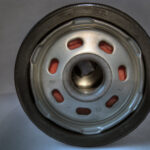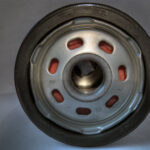Swing Axle vs IRS – Which One is Better?
If you enjoy comfortable, bump-free rides in your car and don’t get tired even after long journeys, you have the suspension system to thank. It is a setup of different components that bear the load of the car and passengers, and connect the chassis to the wheels. A very crucial part and has a major role in overall ride quality and stability.
Since the beginning of automobile engineering, suspension systems have evolved immensely and transformed into modern marvels. The rear suspension of the car is particularly interesting and with so many OEM and aftermarket options, it is important to which system is better in a comparison of Swing Axle vs IRS (independent rear suspension). Let’s get into the details and realize which rear suspension system you should prefer in terms of handling, comfort, and overall ride stability.
What is a Swing Axle? What are the Pros and Cons of a Swing Axle?
A swing axle is an ancient type of rear suspension system, which has now been phased out from the industry, in favor of better, more refined technology. A swing axle has a design where the center section is rigidly connected to the car chassis, and universal joints connect the central section and drive axles.
Due to the lack of universal joints at the wheels, they remain perpendicular to the drive axle at all times. When going over the bump, that side moves upward, and when recoils, it unloads the whole rear suspension. In simple words, the rear wheels are rigidly connected and work as a single unit, so if one wheel goes over a pothole or a bump, the whole rear suspension gets involved.
Pros
- The main benefit of swing axle design is that there is no complexity or expensive parts involved. It is the most basic type of machine setup and its construction is cheap.
- Being a simple part, the repairs and maintenance are super easy and cheap, unlike some modern systems that cost a lot in repairs.
- Replacing a swing axle suspension system doesn’t require any complex tools or heavy machinery.
- It was an ideal system for commercial, and heavy-duty vehicles but was replaced by a better torsion-bar suspension system.
Cons
- It is a highly unstable system, and becomes very dangerous at high speeds and sharp turns due to poor stability.
- The ride quality is not comfortable at all, and even a minor bump feels like a hammer in the back.
- Even till the 1960s, there were frequent complaints of cars turning over and toppling, which lead to its discontinuation.
Also read: Are AWD Cars Good for Drifting? (Must Read)
What is an IRS? What are the Pros and Cons of an IRS?
IRS, otherwise known as Independent Rear Suspension is the most modern iteration of a rear suspension setup. In this assembly, each of the 4 wheels responds independently to the bumps on the road, and the rest of the car remains unaffected.
It uses a complex shock absorber assembly with dampers and springs, working independently. This type of suspension system offers unparalleled comfort and stability on the road and even has different advanced types, such as air suspension and adaptive suspension.
Pros
- IRS suspension offers the next level of comfort and luxury. You won’t feel any bumps or get tired of traveling with IRS at your service.
- As each wheel responds independently, the car never loses traction and maintains stability at high speeds or sharp turns.
- The ride height can also be adjusted according to the terrain, for example, raised height for off-roading and lowered for highways.
Cons
- It is a very expensive system and costs a bit too much.
- Due to its complexity, not everyone can maintain or repair it and you need an expert for the job.
- The spare parts are way too expensive and replacing an Independent Rear Suspension can blow a big hole in your pocket.
Which One Is Better for Off-Roading?
IRS is undoubtedly a better option for off-roading than the swing axle suspension. It comes with ride height adjustment, a better camber, and departure angle, solid traction, and much better control over handling on rough terrains and rocky pathways.
If you’re towing a trailer or carrying a heavy payload, you wouldn’t want a swing axle system behind you, as it would massively increase the chances of overturning or throwing you off the road. It is inherently a very unstable design, and IRS offers much more stability and control in off-roading.
Also read: 10 Best-Looking Cars Under $5k (with Photos)
What are the Major Differences Between Swing Axle and an IRS?
As these two suspension systems are worlds apart, there are various major differences between them. As an auto enthusiast and avid learner, you ought to know these differences in Swing Axle vs IRS suspension systems.
Assembly and Setup
| Swing Axle | IRS |
| Swing axle rod | Tubular steel IRS frame |
| Spacer set | Upper and lower control arms with bushing |
| Bushings | Grease fittings, and fasteners |
| Axle tube retainer | Left and right IRS toe adjustment arms |
| Swing axle side plate | Coil-over shocks with springs Right and left CV axles |
| Differential mounting components | |
| Driveshaft adapter |
Handling
IRS offers a much better handling experience and ride stability, thanks to perfect traction, and sharp steering response. Each wheel has its traction monitored and responds independently to any obstacle on the road.
Swing axle doesn’t offer reliable handling, and there’s usually a lot of understeer with such a suspension system, as the wheels are usually out of traction.
Comfort
Needless to say, IRS has no comparison when it comes to comfort. Where the swing axle acts as a single unit and dances on every ump, IRS reads the road conditions and glides over the bumps, offering a superbly comfortable ride.
Maintenance and Cost
This is the only department where IRS suffers. It is a very costly system, to begin with as it has complex components that cost too much upfront. Moreover, the repairs and maintenance are also very expensive owing to the fact that only a handful of trained technicians can service or repair the independent rear suspension, and the spare parts are very costly to acquire as well, costing too much in labor, price, and taxes.
Is it Possible to Convert a Swing Axle Car to IRS?
If you’re planning to convert your old swing axle into an IRS or have a project in mind, rejoice! There are different aftermarket conversion kits that allow you to convert a swing axle rear suspension system to IRS.
Most of these kits have precise components and bolt-on fittings so that you can easily get rid of the old system and equip your car with the new Independent Rear Suspension System, without having to alter the frame of the car or requiring additional components.
But you must remember that this is only available for car years 1965 and later, and you might be able to find a kit for all the vehicles the kits might be limited to certain makes and models only.






